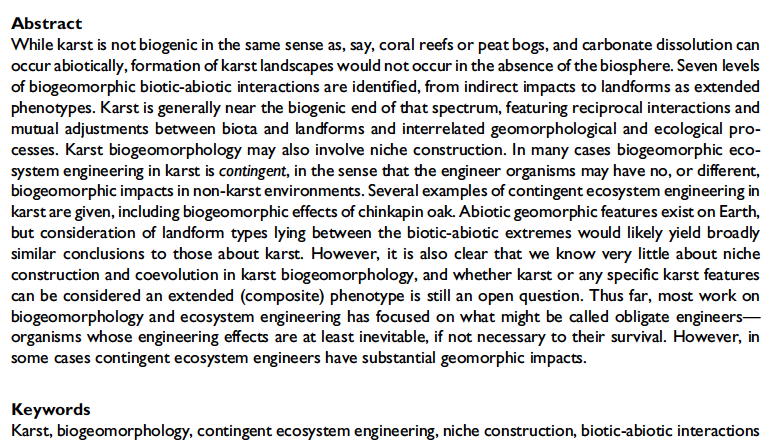Climate Change Effects on Karst: It Depends
Karst development is strongly influenced by climate, both directly (via the moisture balance and temperature regime) and indirectly. The indirect effects include biogeomorphic impacts of biota, and base level changes associated with sea-level and river incision or aggradation. The literature on cave and karst landscape evolution has plenty on the general influence of climate on karstification, the role of base-level changes, and speleothems as proxy records of climate change. There is little on how (or whether) direct effects of climate change influence the rate or nature of karst development.


